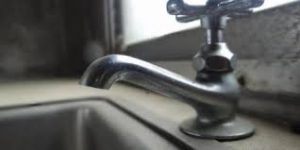Winter weather temperatures bring many cautions to be aware of, including health and safety concerns while outdoors, precautionary driving habits during icy conditions, and frozen pipes or thawing pipes in your home.
Preventing Frozen Water Pipes
Which pipes are most likely to freeze? Prepare these three main areas before winter sets in. However, extra observation and attention during the winter months can prevent a water damage situation.
According to Consumer Reports, a do-it-yourself-tip is one of the least expensive ways to prevent frozen pipes:
“Pipe insulation can cost as little as 50 cents per linear foot at your local hardware store,” says Susan Millerick, IBHS spokeswoman. “So, for not much more than the cost of the aspirin you’d need, you can avoid the headaches of cleanup, loss of precious keepsakes, and the cost of your insurance deductible.”
Use the pipe insulation liberally to protect any vulnerable pipes. For best protection and efficiency, rely on a qualified local plumber who knows the proper installation and location for each type of pipe.
Another tip is to let the faucets drip a little during freezing temperatures. Water directly out of the ground is around 52 degrees, so a continuous drip helps prevent freezing.
Dealing with Burst Water Pipes
Water expands when freezing. This is true for your ice cube tray in the kitchen freezer, as well as for water that has frozen in your home’s plumbing system. Continual freezing and expansion inside the pipe causes a blockage, which builds up pressure where the water is remaining inside the pipe. This is often the point where the pipe bursts.
When you discover a burst water pipe, follow these immediate steps to prevent further damage:
Stop the water flow. Shut off the water to that area, or to the entire house if necessary. It’s a good practice to label the main shut-off valve to your home. Train members of your family how to shut off the valve in an emergency.
If you have city water, the shut-off valve is usually by the water meter. Those who live in the country need to shut off at the water main, or if they don’t know where that is, then at the pressure tank.
Be aware of other safety hazards. The burst pipe may have caused water seepage onto the floor or in the walls. Use caution where water is standing on the floor, and carefully extract the water from the area. If water has affected areas where there are electrical outlets, you may need to shut off breakers to that section of the house. Either instance may require a professional to help assess and repair the damage.
Submerged appliances may also sustain damage that could affect their motor or proper operation. Just a few inches of water on the floor may result in problems for a washer and dryer, or other appliance that sits on or low to the floor.
Call a licensed plumber to assess and assist with the situation.
What to Do when Frozen Pipes Thaw
Changes in winter temperatures may force the previously-frozen pipes to thaw slowly, revealing leaks that can either be large and obvious, or minute and less detectable.
Slow warm-up is best way for frozen pipes to thaw. Don’t try to rush the thaw with a hair dryer or blow torch. Torches and heat guns can set the building on fire if they get too hot.
Don’t pour hot water down the pipes. Trying to warm pipes too quickly might cause cracking in pipes made of copper and iron.
Frozen pipes in the home often need the skill of a plumber. A skilled plumber knows how to safely use a pipe thawer on copper or galvanized pipes. Using this, he can usually detect the cracks in the pipe.
Both PVC and CPVC pipes can also freeze. The cracks in these pipes are harder to see, making leaks common. However, a PEX pipe is a cross-linked polyethylene tubing that is more durable and resistant to cracks and breaks.
It’s a good idea to call a licensed plumber to inspect the pipe line. He will determine the extent of repairs needed, or if a section needs to be completely replaced.
Winter weather brings a variety of annoyances. Prevent one more problem by being proactive about freezing pipes or finding a qualified plumber to fix a burst or leaking pipe. Schedule an inspection with Naugle Plumbing and Heating today if you suspect frozen water pipes.

*
Be the first to comment.